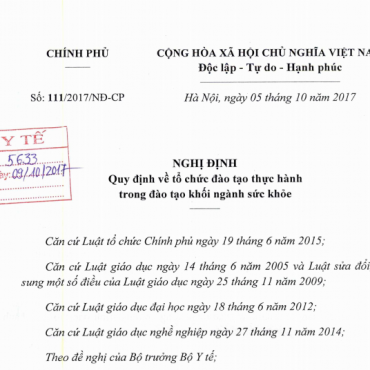Contact Admission
International Collaboration
Emergence of a Novel SARS-CoV-2 Variant in Southern California
Emergence of a Novel SARS-CoV-2 Variant in Southern California
Wenjuan Zhang, PhD1; Brian D. Davis, BSc2; Stephanie S. Chen, BSc2; et alJorge M. Sincuir Martinez, BS1; Jasmine T. Plummer, PhD2; Eric Vail, MD1
JAMA. 2021;325(13):1324-1326. doi:10.1001/jama.2021.1612
A spike in COVID-19 has occurred in Southern California since October 2020. Analysis of SARS-CoV-2 in Southern California prior to October indicated most isolates originated from clade 20C that likely emerged from New York via Europe early in the pandemic.1 Since then, novel variants of SARS-CoV-2 including those seen in the UK (20I/501Y.V1/B.1.1.7), South Africa (20H/501Y.V2/B.1.351), and Brazil (P.1/20J/501Y.V3/B.1.1.248) have emerged, with the concern of increased infectivity and virulence.2,3 Thus, we analyzed variants of SARS-CoV-2 in Southern California to establish whether one of these known strains or a novel variant had emerged.
Methods
Regulatory review with waiver of consent was completed by Cedars-Sinai Medical Center (CSMC). From all samples from symptomatic inpatients and ambulatory care (urgent care, primary care, and employee health) that tested positive for SARS-CoV-2 collected from November 22, 2020, to December 28, 2020, at CSMC with cycle threshold values less than 30, a random sample from selected runs and dates within the collection period was sequenced and analyzed (eMethods in the Supplement). In addition, phylogenetic analysis was conducted with CSMC samples and globally representative genomes on January 11, 2021, by utilizing Nextstrain, a collection of open-source tools for visualizing the genetics behind the spread of viral outbreaks.4 The representative global samples were randomly chosen using a computer algorithm from more than 400 000 available genomes on GISAID (Global Initiative on Sharing All Influenza Data), an open-access global collection of viral genomic data,5 collected between December 21, 2019, and January 11, 2021 (eMethods in the Supplement).
The proportional prevalence of each clade over time in samples from California as a whole and Southern California specifically and presence of any novel lineages discovered worldwide was calculated using publicly available sequences from GISAID (including samples from CSMC), collected between March 4, 2020, and January 22, 2021. Southern California was defined as including the following counties: Imperial, Kern, Los Angeles, Orange, Riverside, San Bernardino, San Diego, San Luis Obispo, Santa Barbara, and Ventura.
Results
Of 2311 samples at CSMC, 192 were selected and 185 (67 inpatient; 118 outpatient) underwent phylogenetic analysis, along with 1480 representative genomes using Nextstrain. A diverse set of lineages with 2 main clusters was identified (Figure 1). The smaller of the 2 clusters was from the 20G lineage and accounted for 22% (40 of 185) of the samples. The larger cluster (36%; 67 of 185) consisted of a novel variant descended from cluster 20C, defined by 5 mutations (ORF1a: I4205V, ORF1b: D1183Y, S: S13I; W152C; L452R) and designated CAL.20C (20C/S:452R; /B.1.429).
Analysis of 10 431 samples from California, including 4829 from Southern California, revealed that CAL.20C was first observed in July 2020 in 1 of 1247 samples from Los Angeles County and not detected in Southern California again until October. Since then, this variant’s prevalence has increased in the state of California and in Southern California, where on January 22, 2021, it accounted for 35% (86 of 247) and 44% (37 of 85) of all samples collected in January, respectively (Figure 2).
Sequence analysis of 405 871 global samples on GISAID on January 22, 2021, revealed that CAL.20C was only found in Southern California in October 2020 (4 cases). In November 2020, 30 cases were also identified in Northern California and individual cases in 5 additional states. As of January 22, 2021, CAL.20C has been detected in 26 states and other countries (Supplement).
Discussion
A novel variant of SARS-CoV-2, CAL.20C, was identified, which emerged in Southern California contemporaneously with the local surge in cases. Unlike clade 20G, currently the largest reported clade in North America, this strain is defined by 3 mutations in the S protein characterizing it as a subclade of 20C. The S protein L452R mutation is within a known receptor binding domain that has been found to be resistant to certain spike (S) protein monoclonal antibodies.6 Because this study was limited to databases of publicly available genomes and a comparatively small set of local samples, the possibility of collection bias cannot be ruled out. Additionally, as clinical outcomes have yet to be established, the functional effect of this strain regarding infectivity and disease severity remains uncertain. Nevertheless, the identification of this novel strain is important to frontline and global surveillance of this evolving virus.
Section Editor: Jody W. Zylke, MD, Deputy Editor.
Article Information
Accepted for Publication: February 1, 2021.
Published Online: February 11, 2021. doi:10.1001/jama.2021.1612
Corresponding Author: Jasmine T. Plummer, PhD, Cedars Sinai Medical Center, 8700 Beverly Blvd, SSB365, Los Angeles, CA 90048 (jasmine.plummer@cshs.org).
Author Contributions: Drs Plummer and Vail had full access to all of the data in the study and take responsibility for the integrity of the data and the accuracy of the data analysis. Drs Plummer and Vail codirected the study.
Concept and design: Zhang, Plummer, Vail.
Acquisition, analysis, or interpretation of data: All authors.
Drafting of the manuscript: Plummer, Vail.
Critical revision of the manuscript for important intellectual content: All authors.
Statistical analysis: Zhang, Vail.
Obtained funding: Plummer, Vail.
Administrative, technical, or material support: Davis, Chen, Sincuir Martinez, Plummer, Vail.
Supervision: Plummer, Vail.
Conflict of Interest Disclosures: Dr Vail reported receiving personal fees from Illumina outside the submitted work. No other disclosures were reported.
Funding/Support: This project was funded by an internal grant to Dr Plummer provided by the Department of Biomedical Sciences, Cedars-Sinai Medical Center.
Role of the Funder/Sponsor: The funder had no role in the design and conduct of the study; collection, management, analysis, and interpretation of the data; preparation, review, or approval of the manuscript; and decision to submit the manuscript for publication.
Additional Contributions: We thank Yizhou Wang, PhD, Applied Genomics, Computational and Translational Core, for demultiplexing files and Jeffrey Golden, MD, Burns and Allen Research Institute, for assistance with editing. Neither received compensation.
Additional Information: Data used in this study have been deposited to GISAID with accession ESP_ISL_824555-824741.
References
1.Zhang W, Govindavari JP, Davis BD, et al. Analysis of genomic characteristics and transmission routes of patients with confirmed SARS-CoV-2 in Southern California during the early stage of the US COVID-19 pandemic. JAMA Netw Open. 2020;3(10):e2024191. doi:10.1001/jamanetworkopen.2020.24191
ArticlePubMedGoogle Scholar
2.Lauring AS, Hodcroft EB. Genetic variants of SARS-CoV-2—what do they mean? JAMA. Published online January 6, 2021. doi:10.1001/jama.2020.27124
ArticlePubMedGoogle Scholar
3.Tang JW, Tambyah PA, Hui DS. Emergence of a new SARS-CoV-2 variant in the UK. J Infect. Published online December 28, 2020. doi:10.1016/j.jinf.2020.12.024PubMedGoogle Scholar
4.Hadfield J, Megill C, Bell SM, et al. Nextstrain: real-time tracking of pathogen evolution. Bioinformatics. 2018;34(23):4121-4123. doi:10.1093/bioinformatics/bty407PubMedGoogle ScholarCrossref
5.Shu Y, McCauley J. GISAID: Global Initiative on Sharing All Influenza Data—from vision to reality. Euro Surveill. 2017;22(13):30494. doi:10.2807/1560-7917.ES.2017.22.13.30494PubMedGoogle ScholarCrossref
6.Li Q, Wu J, Nie J, et al. The impact of mutations in SARS-CoV-2 spike on viral infectivity and antigenicity. Cell. 2020;182(5):1284-1294. doi:10.1016/j.cell.2020.07.012PubMedGoogle ScholarCrossref
Source: https://jamanetwork.com/journals/jama/fullarticle/2776543?guestAccessKey=ad9e8a4c-3b75-4343-8b10-773af6f84246&utm_source=silverchair&utm_medium=email&utm_campaign=article_alert-jama&utm_content=etoc&utm_term=040621
Other library
- One in 10 People Who Had Omicron Got Long COVID: Study ( 20:25 - 01/06/2023 )
- Physical Medicine Academy Issues Guidance on Long COVID Neurologic Symptoms ( 09:58 - 19/05/2023 )
- Breakthrough' Study: Diabetes Drug Helps Prevent Long COVID ( 08:55 - 15/03/2023 )
- BCG vaccine (thuốc chủng ngừa bệnh lao) & SARS-CoV 2 (covid-19) infection ( 10:08 - 27/10/2022 )
- Đại dịch COVID-19 đã kết thúc? ( 09:11 - 22/09/2022 )
- Dị hình giới tính ở COVID-19: Ý nghĩa tiềm năng về lâm sàng và sức khỏe cộng đồng ( 09:22 - 19/03/2022 )
- COVID-19 Update ( 21:00 - 06/03/2022 )
- Một người có thể tái mắc Covid-19 bao nhiêu lần ?? / kèm 6 tài liệu mới ... do "waning immunity", xảy ra ≥6 tháng sau chủng ngừa hay mắc nhiễm .. ( 20:25 - 06/03/2022 )
- T-cells from common colds can provide protection against COVID-19 - study ( 08:25 - 11/01/2022 )
- Coronavirus Can Spread to Heart, Brain Days After Infection ( 07:56 - 30/12/2021 )
















